Micro-influencer marketing. It’s a fast-growing wave and brands everywhere are riding it. Especially on Instagram. The question now is — should you grab your board and catch the surf?
As a business owner, manager or marketer, you should know it’s all about the numbers. And the statistics tell us that using influencers is the key to growing your business.
First, we have to look at the trend. Roughly 70% of millennial consumers use peer recommendations to make purchasing decisions.
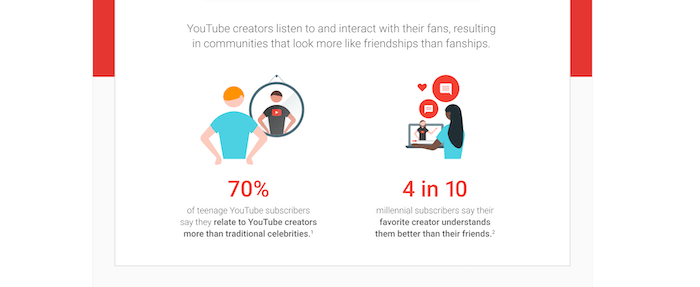
And consumers trust the products non-celebrity bloggers recommend even more than those hawked by celebs.
Shoppers are using a variety of channels to get these recommendations.
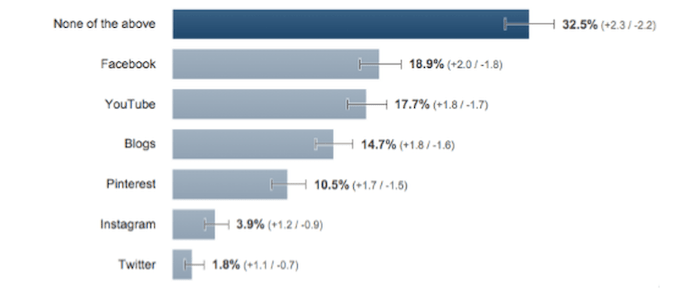
But what’s intriguing is that influencer marketing now yields 11x higher ROI than traditional marketing.
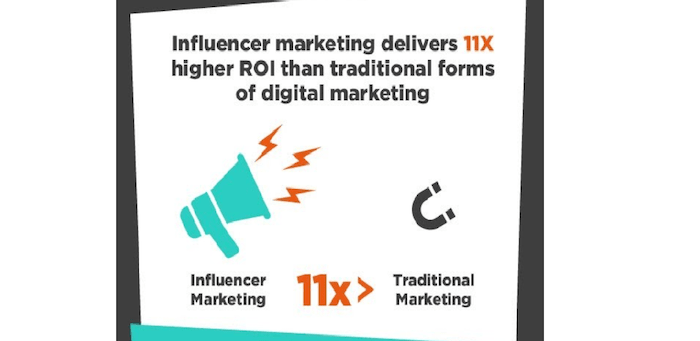
It’s not just some segments of the market who are seeing these results. An astounding 94% of marketers swear by influencer strategies. And another 59% are planning to use them in the near future.

It’s expected that the influencer marketing industry will increase to $10 billion by 2020.
The good news is you don’t need to involve huge social media influencers with millions of followers to boost your sales.
How can this be?
Let’s take a closer look; down the micro level.
Is an Instagram Micro-Influencer Just What Your Business Needs?
When you think of an industry influencer, what likely comes to mind is an individual with hundreds of thousands of followers, if not millions. And you’d be correct, for the most part.
However, there is a whole subset of this world, the micro-influencers, who are individuals with 1K to 100K followers. What makes them special is that they have a direct connection with their audience that wouldn’t be possible on a larger scale.
This connection is why most young consumers today make so many purchases after seeing an endorsement from an online influencer.
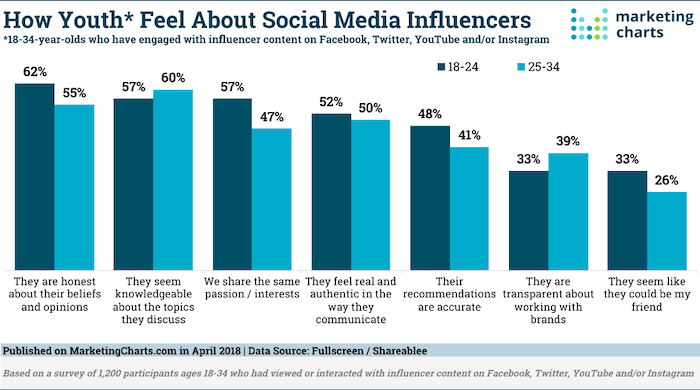
Top 5 Reasons Why Micro-Influencers Should be a Part of Your Social Media Marketing Strategy:
1) Their Audience is More Targeted
When venturing out to find a promoter for your brand, product or service, your first instinct would be to find the biggest dog with the loudest bark.
So initially, you’d go after the influencers with the biggest following. But truth is, these accounts are being followed by a super-broad audience, which won’t help you much, especially if only a small fraction of their audience would find interest in your offer.
Micro-influencers, on the other hand, tend to have highly-targeted audiences. This is because they have a niche, such as travel, fitness, health, fashion, pets and so on.
This means you should look for micro-influencers that have your exact target audience and get them promoting your business. By doing so, you’ll have a better chance of generating good conversion rates.
And let’s not overlook the sheer number of potential micro-influencers at your disposal on Instagram. Nearly 40% of Instagram accounts with more than 15K followers identify as influencers.
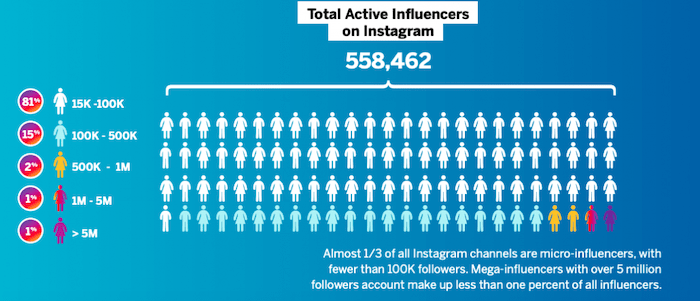
So if you’re trying to increase your reach on Instagram, then micro-influencers are the way to go.
2) They’re More Genuine and Relatable
How many celebrities have you seen promoting things on television whose lifestyles have even an inkling of resemblance to your own life? Probably not too many, if any.

This creates a disconnect between consumers and celebrity promoters, making it harder to trust them. The reality is that celebrities definitely don’t use most of the products and services they endorse.
It’s why you’ll find more consumers actually taking the recommendations of micro-influencers seriously.
Micro-influencers are everyday people with similar problems and goals to yours. They’re easy to relate to. You’d trust them because, for one, they have the same interests (niche) as you, and also, they actually try the things they review and recommend — sometimes right on video.
When you find a potential influencer, consider giving a free trial or sample. This way, they can speak knowledgeably about your product or service.
3) Working with Micro Influencers is Easy
Let’s face it, celebrities can be major divas and don’t have time to speak to the likes of you. Or at least, that’s how it feels.

They do get approached by brands left and right, which just makes it harder to reach them.
However, the chances of a micro-influencer in your specific niche being bombarded by hundreds or even thousands of brands are much lower. This gives you better prospects for having your DMs answered, especially if they’re an aspiring celebrity who is hungry for the engagement that will take them to the top.
Need help managing your company’s Instagram,
getting more followers,
creating awesome social videos, or
optimizing Facebook Ads?
You’ve come to the right place.
Get in touch for a free demo.
4) Prices are Right Up Your Alley
The rates for sponsored posts and single shout-outs can be into the high thousands when you’re dealing with a big-time influencer.
Yet, with a micro-influencer on Instagram, you can easily spend a couple of hundred dollars or less for a promotional post. This suits the budget of most small- and medium-sized businesses.
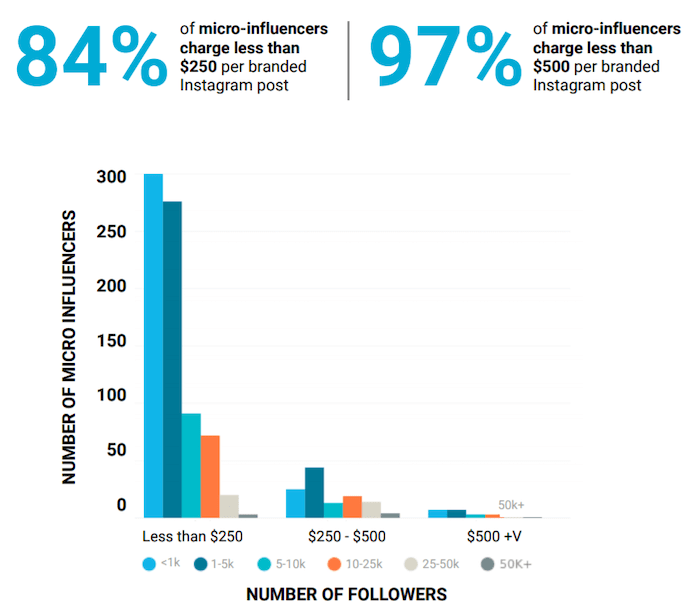
You may even find some who are willing to trade promotion in exchange for free products or services. But you need to have something they’d be interested in.
For example, if you’re in the hospitality industry, you can offer a free stay at a hotel to a micro-influencer in the traveling niche. Not only does this act as a gift, but it gives them more content to share.
5) Their Instagram Followers are More Engaged
In marketing, the importance of engagement cannot be overstated. Without it, you have nothing but bloated vanity numbers doing absolutely nothing for your bottom line.
Therefore, it’s not about the number of followers an influencer has. If their following is not active, liking, sharing and commenting on what they post, then it pretty much means nothing. Worse than that, it means users are seeing it, scrolling by and not even giving it a digital thumbs-up (or that they’re not even real people).
Who wants to invest in an “influencer” who posts content no one cares about to a bunch of empty bot accounts? Chances are, no one’s going to get engaged with your promotion, either.
Instead, with micro-influencers, you’re getting access to a highly-engaged audience.
How engaged are we talking?

Stats show that audiences are reacting 60% more to micro-influencers than to those with enormous followings. Micro-influencer content is 6.7x more efficient at engaging audiences.
And it’s also been found that these individuals engage in 22.2 times more conversations every week about recommending things than average consumers do. They know what they’re talking about and people want their advice.
These conversations lead to marketing campaigns with increased conversions.
It’s common sense. Promoting to 10k relevant and engaged followers is going to pan out better than promoting to 100k generic followers who may like your posts, but don’t convert into clients.
3 Tips for Working with Instagram Micro-Influencers:
Ready to start working with micro-influencers on Instagram? Now you’re starting to see the light!
After all, it’s the platform of choice for influencers.
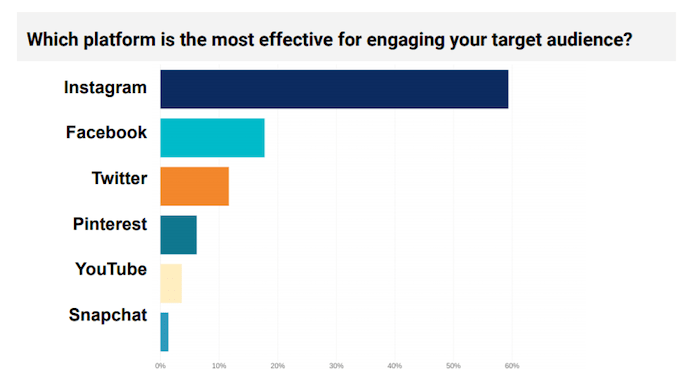
Tip 1: Find the Right Micro-Influencers
The next step is finding the perfect influencers for your brand. You can begin by looking on Instagram. Search for hashtags that relate to your industry.
Just type in #[keyword] into the search bar at the top.
You could go broad with this, e.g. “travel,” “restaurant,” or “shoes.” But we recommend that you go detailed, e.g. “travel blogger,” “vegan restaurant,” or “Nike sneakers.”
Once you locate some potential influencers to work with, it’s time to make contact.
You should aim for those who are already fans of your brand (or at least the products or services you offer). This will make it easier to promote you without rubbing their followers the wrong way.
This will also make their followers more likely to try your brand.
Tip 2: Use Storytelling
Another strategy is to use storytelling (preferably visual) to promote your brand. This beats simply posting about your upcoming sale or giving a product/service review.
There are several reasons why visual storytelling works in marketing.
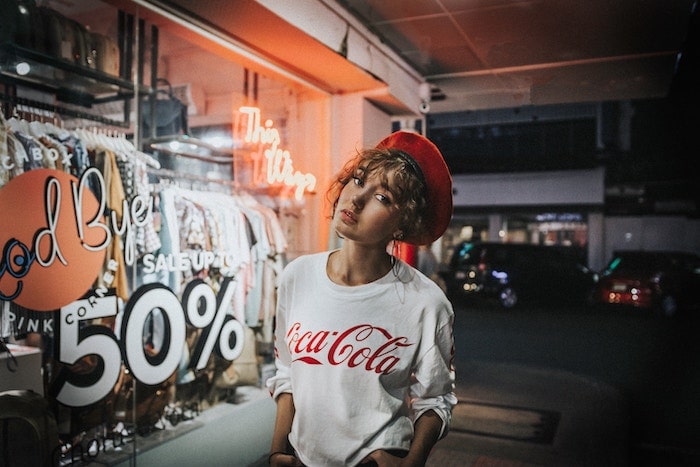
Source
A narrative serves to:
- Make it easier to understand your product or service
- Help to set your brand apart from the competition
- Build an emotional connection
- Yield higher consumption and retention rates.
Try to tell your brand’s story, the ‘why’ behind your efforts and what benefits you offer to customers. You can do this by creating short videos, which are no more than a minute or two. Then have the micro-influencer share them.
Your content can be a mix of product or service demonstrations, testimonials and behind-the-scenes footage of your company. In doing this, you help the influencer’s audience connect with your brand.
Tip 3: Opt for Ongoing Campaigns
Lastly, you should make your campaign an ongoing one. Simply having an influencer post about your brand once or twice isn’t going to cut it.
As with any form of marketing, it takes multiple touches to get a lead to convert. A better way to go about it is to create a drip campaign, similar to email marketing.
You can use the visual content you created in Tip 2 for this purpose.
Start with an intro to your brand. Then follow up with more: insider glimpses, stories, product/service demos and other posts that educate followers about your brand and its products/services.
Another option is to create a series of guest-blogger posts to educate and engage the influencer’s audience. If the influencer doesn’t have a blog, you can publish it on your own site and supply the link for them to share.

Source
If you have a pending launch date, this type of campaign will help to generate buzz in advance of it.
As long as you can deliver content that the influencer’s audience will find valuable, you shouldn’t have an issue with establishing an ongoing promotional campaign.
A good start might be to aim for 5-7 pieces of content that the influencer posts weekly or every other week, depending on your campaign’s time constraints (and the influencer’s schedule).
Micro-Influencers + Instagram = Thew Winning Marketing Formula Your Business Needs?
There’s no denying the benefits micro-influencers have on business marketing. They can connect you with your target audience and boost your sales and conversions quickly.
The key is finding the right influencers that are in your niche. Do that, and follow it up with some of the top Instagram tools for business, and you’ll have yourself an effective strategy.

Your first step now is to begin your search for influencers to connect with. Take your time and build a relationship before going in for the pitch. It’s important for both of you to get a feel of each other’s goals before deciding whether you can help one another.
To increase your chances of snagging an influencer, ensure there are mutual benefits. If you don’t have the funds to pay, make your offer a sweet deal they can’t resist. And then get creative with how to utilize your new audience.


